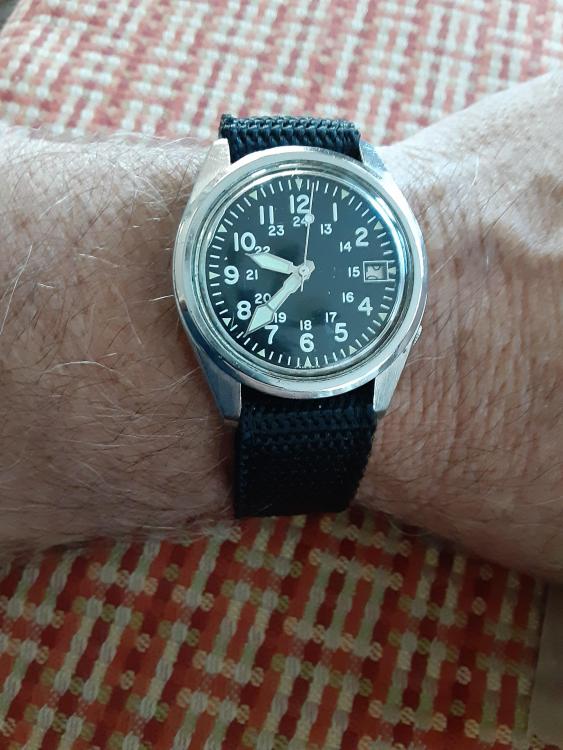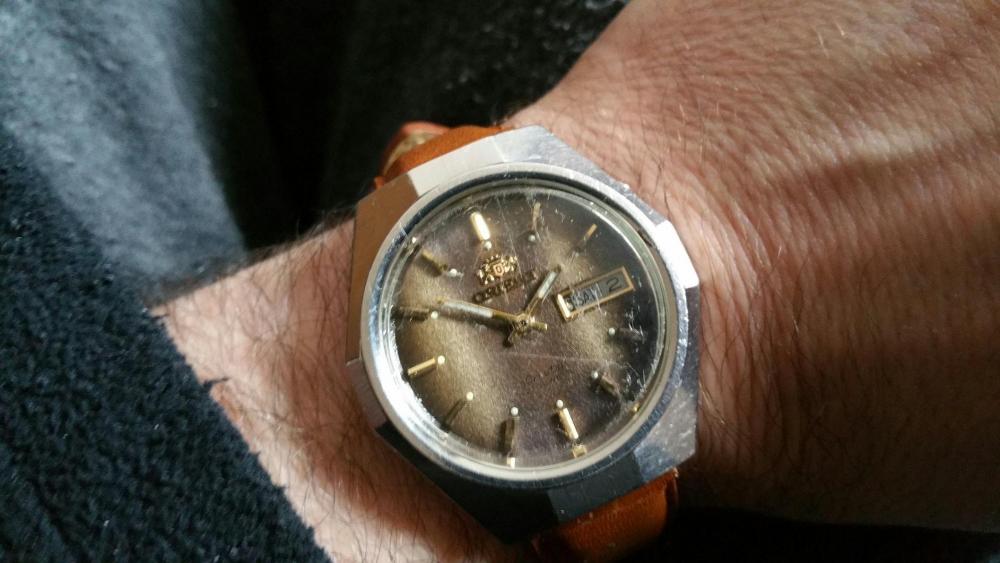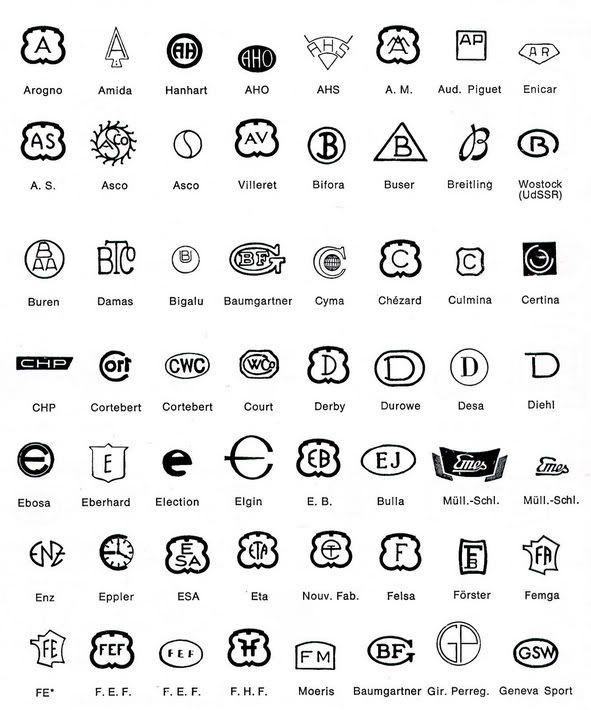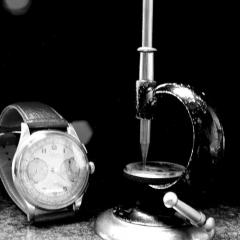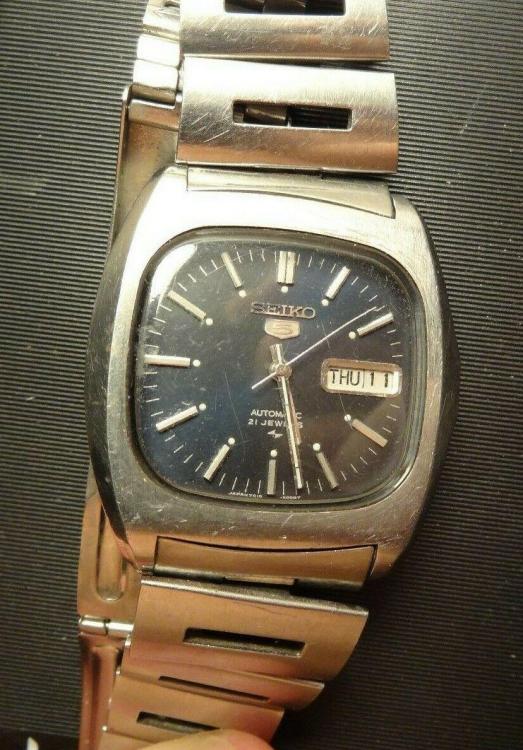Leaderboard
Popular Content
Showing content with the highest reputation on 11/02/19 in all areas
-
A little more clarity; Incabloc.pdf correct Also correct Right again OD of the hole jewel Right on both counts Here you've got me This is the little "U" shaped clip that holds the bloc into the main plate or balance cock on the balance side in thos settings that aren't a friction fit. This is indeed a screw for those settings where the bloc is secured in place with a screw instead of a Clavette pivot hole jewel, although I much prefer the stoned feline This actually reads "Pierre de Contre Pivot" "dessus" "dessous" and is the cap jewel upper and lower. This is important as often the lower cap jewels are thinner than the upper ones. As above this should read "Ressort de Contre pivot" "dessus" "dessous" and refers to the lyre springs or cap jewel springs. Contre pivot = end stone or cap jewel. Where different thicknesses of cap jewels are used top and bottom you will need different springs to accomodate their different dimensions. If anyone can fill in collumns 7 & 8 we will have the full picture, although I believe that they refer to dimensions not part numbers.2 points
-
2 points
-
My friend has offered to send you one Gratis, just need your details. PM me if you still need one. Jon2 points
-
This is a 400 hundred day with 4 ball pendulum probably around the 1920's. Its German and it would have a glass dome. It has its original hands and dial The early types had a disk pendulum.1 point
-
Hi Bulle clock with an ATO Type mechanism common failures are the drive transistor and an O/c Coil nice looking clock so be careful with it.1 point
-
Hi Looks like a german clock but I see no makers marks. Once the back plate is exposed I might be able to Identify it from the Horolovar 400 day back plate guide. I like these clocks and have a few both spring driven and quartz.1 point
-
Bulle clock, this one works off a battery. There's a tremendous amount of info on these clocks on the internet. Be careful as some have been known to fetch good prices. You need to check the serial number.1 point
-
Mantle Westminster chime with silent or chime. I don't see the chiming gong? It also strikes on the hour. 8 Day duration.1 point
-
Well we still have the Americans, where only the machinists have surrendered to thousands, yet they still call the other system "sillymeters"1 point
-
Welcome to the forum. From what I can see (in Close up) the inside of the tube carries a thread, Therefore the the crown tube has a thread and screws down on to the tube. Either one could be stripped so carefully check both out before attemping to remove the tube. Remove the crown from the stem and inspect the crown tube1 point
-
1 point
-
@VWatchie Ha ha ha...... just love the stoned kitten!!! This might help make things a little clearer though.. http://www.incabloc.ch/en/systeme_incabloc.php1 point
-
More USSR era spares.. and potentially a couple of resurrection candidates, winging their way to me from the penny lots on ebay.1 point
-
Thank you, @Marc! That table which you linked to is potentially very useful but I’m having serious trouble understanding the French headlines. Perhaps those of us interested can “decode” it together? For every column with a parenthesis and a question mark I don’t feel sure at all and need your additional info! Column 1: Calibres de base = Base calibre Column 2: Grandeur = Ligne size Column 3: Calibres dérivés = Derived calibres Column 4: Ø trou = Hole diameter (I guess, but what hole?) Column 5: Bloc dessus = Upper shock block (for the balance cock? I’m just guessing) Column 6: Bloc dessous = Lower shock block (in the main plate? I’m just guessing) Column 7: Creusure plat. = Recess ??? (I have no idea!?) Column 8: Creusure cad. = Recess ??? (I have no idea!?) Column 9: Clavette = (I have no idea!?) Column 10: Vis = (Means “screw” in French but again, I have no idea?) Column 11: Chaton empierré = (Google translates this to “stoned kitten”. Jewel housing, no?) Column 12: Pirre de dessus = (Google translates this to “Stone from above”. Could it be the balance cap jewel on the balance cock side?) Column 13: c. pivot dessous = (Something a about "Pivot underneath". Could it be the balance cap jewel on the main plate side?) Column 14: Ressort de dessus = (I guess this could be the anti-shock spring for the shock block in the balance bridge?) Column 15: c. pivot dessous = (Well, if the previous is an anti-shock spring then this would be the anti-shock spring for the shock block in main plate?) A French Chaton empierré!?1 point
-
1 point
-
Thats an odd one, in that it looks to have only 1 row of stitching on it and quite a bit in, I've not seen one like that before, its half way between a loosefold and a stitched mop. Loosefold are great for final polish wear you want to keep the metal removal to a minimum, stitched mops tend to be a bit more aggressive.1 point
-
1 point
-
1 point
-
1 point
-
It's a Fontainemelon 70. The logo there is a stylized FHF, their ebauche designation.1 point
-
I didn't sleep too well actually. Well, I have a cold as well so that didn't help too much Anyway, good idea, I'll get back to you once I've recovered... It looks like my very good Swedish compatriot @rogart63 might be able to help me out (he has come to my rescue before). Anyway, I'll keep you updated on the progress. A big thanks to all of you for your compassion and willingness to help me out! Invaluable!1 point
-
The embedded picture is actually a link. If you click on it it takes you to the web page which is much easier to read. Check the left hand "Base Caliber" column for 2776. Move across to the third "Caliber Derivatives" column and it lists all of the derived ETA calibers that use the same part. Then move across the columns to the right for the individual part numbers for the bloc, chaton, pivot jewel, cap jewel, and spring, for both upper and lower settings. Order the parts you need by Inca part number. Check out http://cgi.julesborel.com/cgi-bin/matcgi2?ref=X\ZDXITL and you will find a whole load of other calibers that use the same part.1 point
-
1 point
-
If all you lost was the cap jewel and still have the chaton and hole jewel it's not the end of the world. A generic cap jewel with right diameter and thickness would work. Chances are you would find one that fits from assorted cap jewel sets if you don't already have scrap movements lying around that may have fitting cap jewels. You can start pulling your hair out if you lose the chaton/hole jewel though so definately be a lot more careful with those.1 point
-
Here's the link to the mention software. Then the same software is also available on eBay. http://www.delphelectronics.co.uk/products.html https://www.ebay.com/itm/Watch-Clock-Timing-Machine-S-W-Witschi-Greiner-Vibrograf-Timegrapher/1124739626151 point
-
I will happily do my best for you. Will make contact with my Watchmaker friend.1 point
-
Check out the link below. It gives all the applicable interchangeable movements and all the individual part numbers. Order by Inca part No. from Cousins.1 point
-
I know how you feel after stripping down a Seiko movement for the fifth time and now on my sixth with a bit more success. Keep the faith you will either find it or find a replacement. Do you have a part number I could ask my trusted Watchmaker if he can supply the part, maybe a picture also could help. A long shot but never hurts to ask.1 point
-
Get a strong torch and search when it's dark; if you are really lucky you may see some flicker. Did you check your hair, your eyebrows, your nose (look in the mirror !), inside your sleeves / shirt etc ? Best is to leave your clothes on the spot. When start walking through the house, you have no idea anymore. Check your shoe soles !! Of course if you have your desk on a carpet floor, than you are done and the lesson to be learned is to move your desk to a room with a smooth seamless floor. If the floor is smooth, and as last resort, get a new & empty bag in your vacuum cleaner and vacuum the whole floor without using a brush. Cut the bag carefully open after you are done. I once found a tiny, very tiny screw of a 17mm ladies ETA2450 back using the vacuum cleaner trick. Suc6 .......1 point
-
I do grind down the back side of pallet stones sometimes, when they are bottomed out in the fork and still need to go in more. You see this on really old stuff, high end, where there was a matter of pride in not having a gap between the bottom of the slot and jewel; also when replacing a jewel sometimes. On rare occasions it's necessary to regrind the impulse face to change the angle, again often when changing a jewel. The Levin book Practical Benchwork for Horologists has some good information on how and when to reshape an impulse face. I adjust the escapement, either moving the pallet stones, the bankings, or both, on I think probably 1/3 of the watches I do- some weeks it seems like I do pretty much every watch. I understand it seems daunting to the uninitiated, but it really is a necessary task on many watches. I will dig through my books and see if I can find a concise explanation of the steps for checking. Actually moving the stones is another issue, and here having certain tools available makes it much easier, but way back in school we just had simple pallet warmers and an alcohol lamp and a strong loupe.1 point
-
I also have th 600 buck escapement analyser software that I run to see specific problems. I just find that taking a quick video let's me know right away if there is an amplitude problem Sent from my GT-N5110 using Tapatalk1 point
-
Approach. . ,,,to grind down the length of the long pallet stone,,, shorten it,s length, which then makes possible, relocating said pallet further inside the fork slot. thence reduce the depth of the lock. You will be grinding ,,,the end ,,, of the stone, Call the end that engages with escape. ,,, the tip,,, Reducing the said depth is reducing the length that pallet & escape teeth drag on each other. So we get stronger impulse, thence enhance the amplitude. Diesel fuel stays on escape teeth for few hours, considerably reduces friction. Helps Show us the effect of the deep lock on amplitude, in this case . Pallet-fork replacement, though may enhance the amplitude, wont provide much of chance to conclusively learn from it. Chance to learn especially that Nickelsilver has joined in, your treat.1 point
-
1 point
-
Also, regarding your original post, bent balance pivots are just not common on incabloc balance settings, but still possible. If it was a non-antishock watch then it would be reasonable to suggest, along with checking for a “mushroomed” or broken pivot. Occasionally you’ll come across an antishock balance setting which is fussy about seating correctly which may bind the pivot. Release the spring on the balance cock without removing the jewels and see how the amplitude responds. If it increases then it’s obvious that there’s possibly an issue with either or both settings.1 point
-
As always, I enjoy reading what the pros suggest. Thanks, Nucejoe! I will guess that a cap jewel is unseated or misaligned. As far as the second hand stopping at 3 seconds, follow the above. A slow process but you will get to learn and master the proper way to find fault. Regards.1 point
-
This one of those faults that are not easy to resolve without close inspection. I would first look at the behaviour of the H/Spring is it breathing evenly. It could just be some dust/dirt that has attached to the spring after it was dropped. If not it is about removing from the case and stripping / cleaning and inspecting as you go.1 point
-
I also have these watches I bid on and one Sent from my iPhone using Tapatalk1 point
-
An SARB065. Can't wait as this is a beautiful dress watch Sent from my iPhone using Tapatalk1 point




